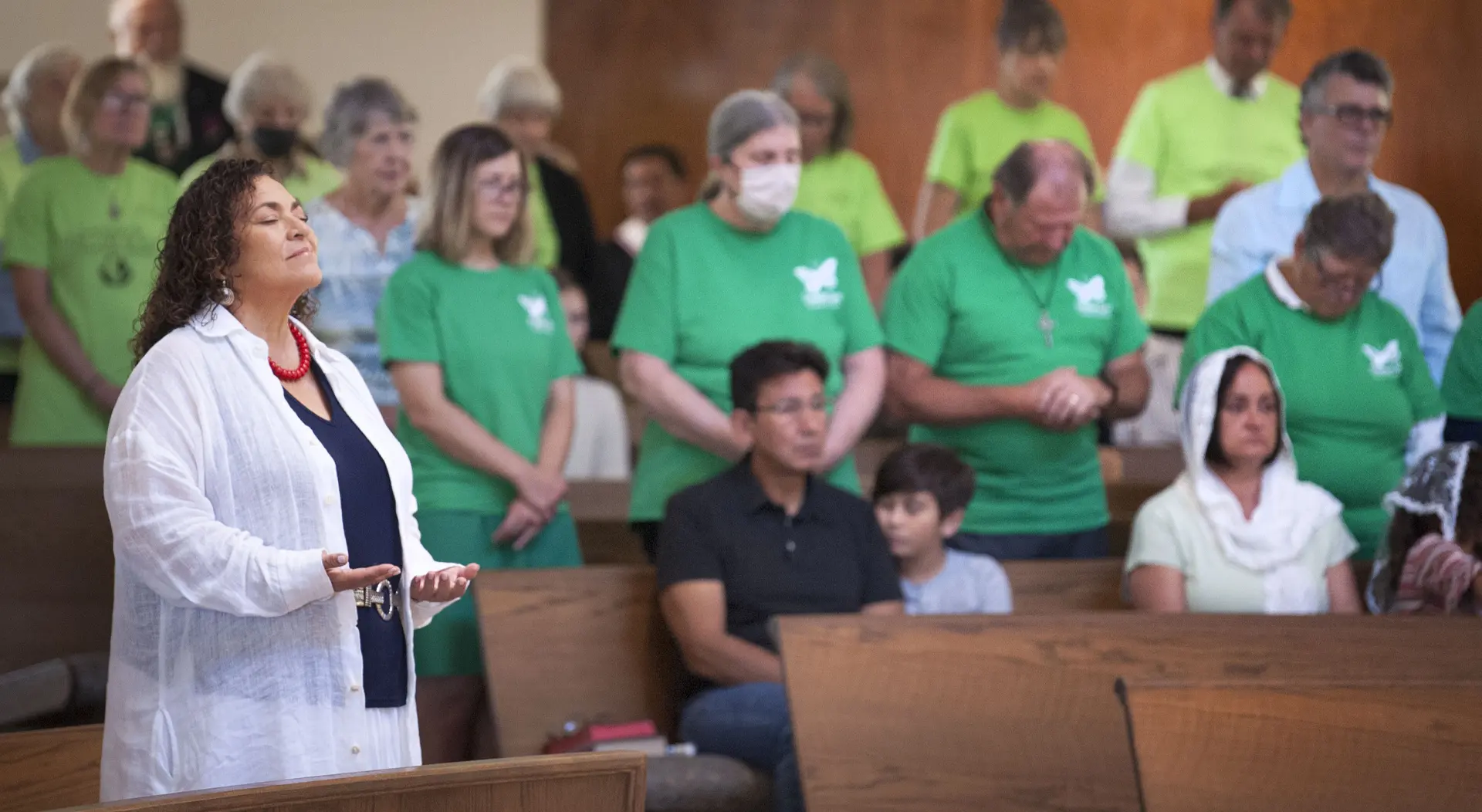Office advocates for human dignity and the sanctity of life for all persons, from conception to natural death.







Christ has no body now but yours.
No hands, no feet on earth but yours.
Yours are the eyes through which He looks compassion on this world.
Yours are the feet with which He walks to do goods.
Yours are the hands with which He blesses all the world.
Yours are the hands.
Yours are the feet.
Yours are the eyes.
You are His Body.
Christ has no body now on earth but yours.

Director
Associate Director, Culture of Life
Associate Director, Creation Care




Follow the news about our Catholic community,
in English and Spanish.
Bishop Pulido’s coat of arms is divided into four quarters with wavy horizontal lines from top to bottom. The blue and white lines represent the Blessed Virgin Mary. They also suggest water, which alludes to Jesus washing the feet of His disciples and to the waters of baptism. The red and gold lines represent the Holy Spirit and fire. The colors also can be seen as referring to the Blood that (along with water) poured from Jesus’ side at His crucifixion, as well as to the bread (gold) and wine (red) transformed into the Eucharist. At the center is a roundel featuring a symbolic representation of the “mandatum” (washing of the feet), which he believes exemplifies service to all humanity. The roundel’s outer edge is a line composed of small humps; it is borrowed from the coat of arms of the Diocese of Yakima, where Bishop Pulido served as a priest before being named a bishop.
Bishop Pham’s coat of arms depicts a red boat on a blue ocean, which is crisscrossed by diagonal lines suggesting a fisherman’s net. This symbolizes his ministry as a “fisher of men,” as well as how his own father had been a fisherman. The boat is also a symbol of the Church, which is often referred to as the “barque of Peter.” At the center of the sail is a red beehive (a symbol of the bishop’s baptismal patron saint, St. John Chrysostom, who was known as a “honey-tongued” preacher). The beehive is surrounded by two green palm branches (an ancient symbol of martyrdom; the bishop’s ancestors were among Vietnam’s first martyrs). The eight red tongues of fire around the boat are a symbol of the Holy Spirit and a representation of the diversity of ethnic and cultural communities. The red of the boat, the beehive and the tongues of fire allude to the blood of the martyrs.
The coat of arms combines symbols that reflect Bishop Bejarano’s spiritual life and priestly ministry. The main part of the shield shows four wavy vertical lines on a gold background. These represent flowing waters. This alludes to his chosen motto and also symbolizes the graces that come from the Divine life to quench our thirst for God. The upper third of the shield is red because it is borrowed from the coat of arms of the Order of Mercy, of which the Bishop’s patron saint, Raymond Nonnatus, was a member. The central symbol resembles a monstrance because St. Raymond is often depicted holding one. The Eucharist is Bishop Bejarano’s inspiration for his vocation. It was through the Eucharist that he received his call to the priesthood at age seven and which keeps his faith and his ministry going. It represents the call to offer oneself as a living sacrifice. The monstrance is flanked on either side by an image of the Sacred Heart, alluding to the mercy of God and echoing the idea of a sacrificial offering of oneself united to the sacrifice of Christ, and of a rose for Our Lady. It is an allusion to Our Lady of Guadalupe, patroness of the Americas, and highlights the bishop’s Hispanic heritage.